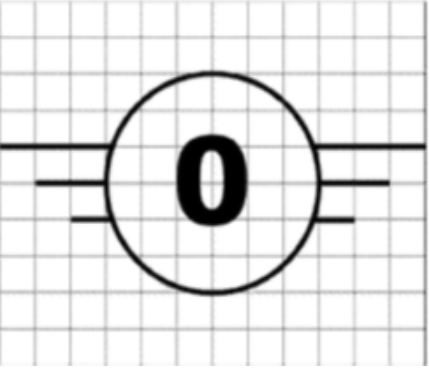In order to maintain some consistency between classes I’m going to cover the following areas of the Delegated Regulation requirements for each class in the same order:
Weight / Dimension / Speed / Height
Controllability / Design / Power / Battery Alerting
Noise Emissions / Serial ID / Lighting
Remote ID
Geo-Awareness
System Intervention and Follow-Me
Data Link Failure Behaviour
User Manual and Box Content
Class Marking Symbol
The following symbol will be used to show this class of drone
Weight / Dimension / Speed / Height
The Maximum Take-Off Mass must be no more than 250g
There is no maximum size specified for this type of drone, but obviously the weight will limit this quite significantly.
The maximum speed allowed is 19 m/s (42 mph or 36 knots)
The maximum attainable Height 120 m above the take-off point
Controllability / Design / Power / Battery Alerting
The drone will need to be safely controllable in stability, maneuverability, and data link performance by an RP following manufacturer instructions and under all anticipated operating conditions including failure of one or more systems.
The drone will need to be designed and constructed to minimise injury, minimising sharp edges and if equipped with propellers, limit injury that may be inflicted by them.
The drone will need to be powered by electricity with all voltages (Nominal, Accessible, Internal) <24V DC or AC Equiv. Internally this can be more if the voltage and the current combination has no risk and no harmful electric shock (even when damaged)
There are no requirements for battery alerts, but that’s not to say it can’t be included. Many basic drones nowadays have this, even if it’s just a flashing light to say the power is low.
It should be noted that if the drone in this class is being sold a toy (as per regulation 2009/48/EC) then the requirements on Controllability, Design and Power do not apply. I’ve not read into why exactly, but I suspect the regulation for toys is more stringent in terms of ensuring safety to the user.
Noise Emissions / Serial ID / Lighting
There are no requirements specified for Noise, Unique Serial Identification, or Lighting in this category.
Remote ID
There are no requirements specified for Remote ID in this category
Geo-Awareness
There are no requirements specified for Geo-Awareness in this category
System Intervention and Follow-Me
There are no requirements specified for system intervention (i.e. auto control or intervention from the drone itself overriding the human input) in this category
Follow-me mode shall not exceed 50m and shall allow RP to regain control
Data Link Failure Behaviour
There are no requirements specified for data link failure behaviour in this category
User Manual and Box Content
The User Manual shall clearly identify:
Class
Mass (with reference config) and MTOM
Allowed payloads (mass, dimensions, interfaces and restrictions)
Equipment and S/W to control UA Remotely
Behavior in case of loss of data link
Clear Operational instructions
Limitations (including meteorological, day/night)
Risks related to UAS operations adapted for the age of the user
The box shall contain an EASA Info Notice detailing laws etc. applicable to the drone.
Based on the above my interpretation is that these drones are going to be quite small, low risk, in today’s world this would be anything ranging from a really simple toy through to a Hubsan x4 or something like a Spark or a Tello. However it’s important to know that drones placed on the market prior to these regulations can’t be claimed to fall into any of these Classes. They fall under a different set of rules that have been set up to cover the use of legacy drones.
DJI Tello
Small Print: These posts are a summary only, include my personal interpretation and are not intended to be a replacement for reading the actual rules.



